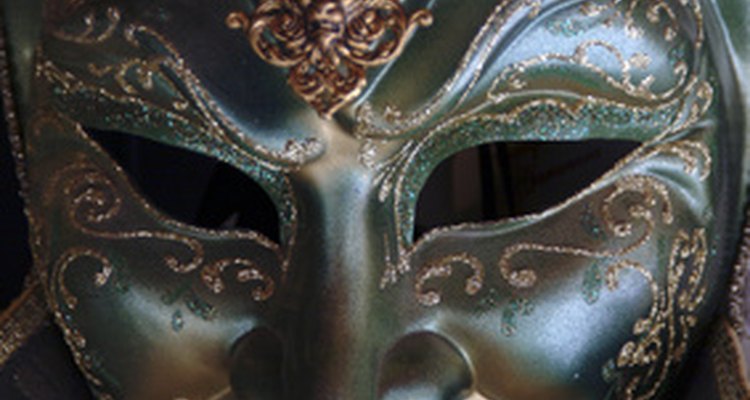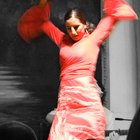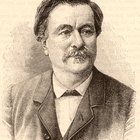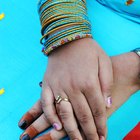
Carnival masks have been a cultural tradition for centuries, tracing their origins to early Venice and then being exported across the globe. There are at least four traditional types of masks, with many variations in shape, decoration and accompanying costume displayed during carnival festivities. Despite its traditionally Roman Catholic beginnings, carnival is now a festival enjoyed by countless people and cultures every year.
History of the Venice Carnival
The origins of carnival and its accompanying tradition of wearing masks can be traced to Venice, Italy, starting in the 14th century. The original carnival allowed all of the classes of society in Venice to have a celebration together, as all faces were covered by masks to shield identities. Carnival festivities were banned during the reign of Mussolini, but were reinstated during a Venetian cultural revival in the 1970's. Carnival begins before the Christian season of Lent, where fasting and prayer for 40 days, signifying Christ's 40 days in the wilderness, lead up to the days commemorating Christ's crucifixion. The final day of carnival for Christian practitioners is known as Mardi Gras, which falls on Fat Tuesday, or the final day to eat all rich and sugary foods that are banned during the Lenten season. It is possible that the carnival festivities are rooted in the need to dispose of the sumptuous foods and alcohol before entering Lent.
Carnival Around the World
While Venice may be attributed as the inspiration behind carnival and the tradition of wearing masks, carnival celebrations take place around the world, predominantly in Christian, and specifically Roman Catholic and Eastern Orthodox oriented countries. A few of the most widely known carnival celebrations include the festivities in Brazil in South America, and New Orleans, Louisiana in the U.S. The carnival tradition originally spread from Italy through the channel of Catholicism to other Catholic countries such as Spain, France and Portugal, moving outward from there. Carnival festivities spread with European travelers to other parts of Europe, the Caribbean, South and North America. Some countries celebrate secular carnival activities, such as the festivals held in England and India. Whether religious focused or not, the tradition of masks and costumes is the permeating symbol in every carnival festival around the globe.
Bauta Masks
Bauta masks typically cover the whole face, but can be found in varieties that leave the mouth free to talk and eat. The full face Bauta mask is known for its pointed chin, absence of a mouth, and the eye cut outs being the only revealed part of the wearer's face. The Bauta is one of the oldest relics of traditional carnival masks, worn by Venetians to disguise identity and social class throughout the year during festivals that permitted mask wearing.
Columbine Masks
Columbine, or Columbino masks, only cover half the face and are extremely ornate, with decorations of gold, silver, gems, crystals and feathers. They can be attached to a baton that must be held to the face, or they can have ribbons on either side to be tied around the head. The origins of the Columbine mask are attributed to a beautiful actress from the Commedia dell'arte of Venice, or, Comedy of Professional Artists, who had the mask specially made because she did not want her entire face covered.
Medico Della Peste Masks
The Medico Della Peste mask covers half the face and has a long beak protruding over the nose. The mask design originated in the 16th century from a French doctor, Charles de Lorme, who designed the mask to create distance between himself and victims of the plague who he treated. The doctor also wore a black hat, black cloak, white gloves, and carried a white cane to prevent any contact with an infected person. People who wear the Medico Della Peste mask today often don the doctor's traditional costume with it.
Volto or Larva Masks
The volto, or larva mask, is a traditional Venetian mask and is traditionally found in white, worn with a tricorn hat and long cloak. The term "larva" originates from Latin and refers to "ghost" or "mask," implying the ghostly affect created by wearing the full face covering white mask. The mask is traditionally worn with all black attire, and is designed to allow a wearer to speak, eat and drink easily. Although traditionally white, volto masks can be decorated and painted to become extremely ornate and delicate.
Related Articles

How Do the Hula Girls Dress in Hawaii?

Reasons to Get a Nose Ring

Facts About Sombreros

What Is an African Kufi Hat?

What Are Bowlers, Bonnets, Beanies & ...

Why Do Brides Wear Veils?

What Feathers Mean to the Cherokee

Mediterranean Theme Ideas

Adult Party Ideas for a Medieval ...

Who Wears Red Fez Hats?

Hat Trends of the Seventies

The Significance of Earrings on Men

North American Wedding Traditions

Hispanic Clothing History

What Kind of Outfit Can You Wear With a ...

Children's Activities on Moses, the ...

How to Cook Escolar Fish

Toga Party Song List

How to Make a Mustache Bushy

Malay Traditional Wedding Attire